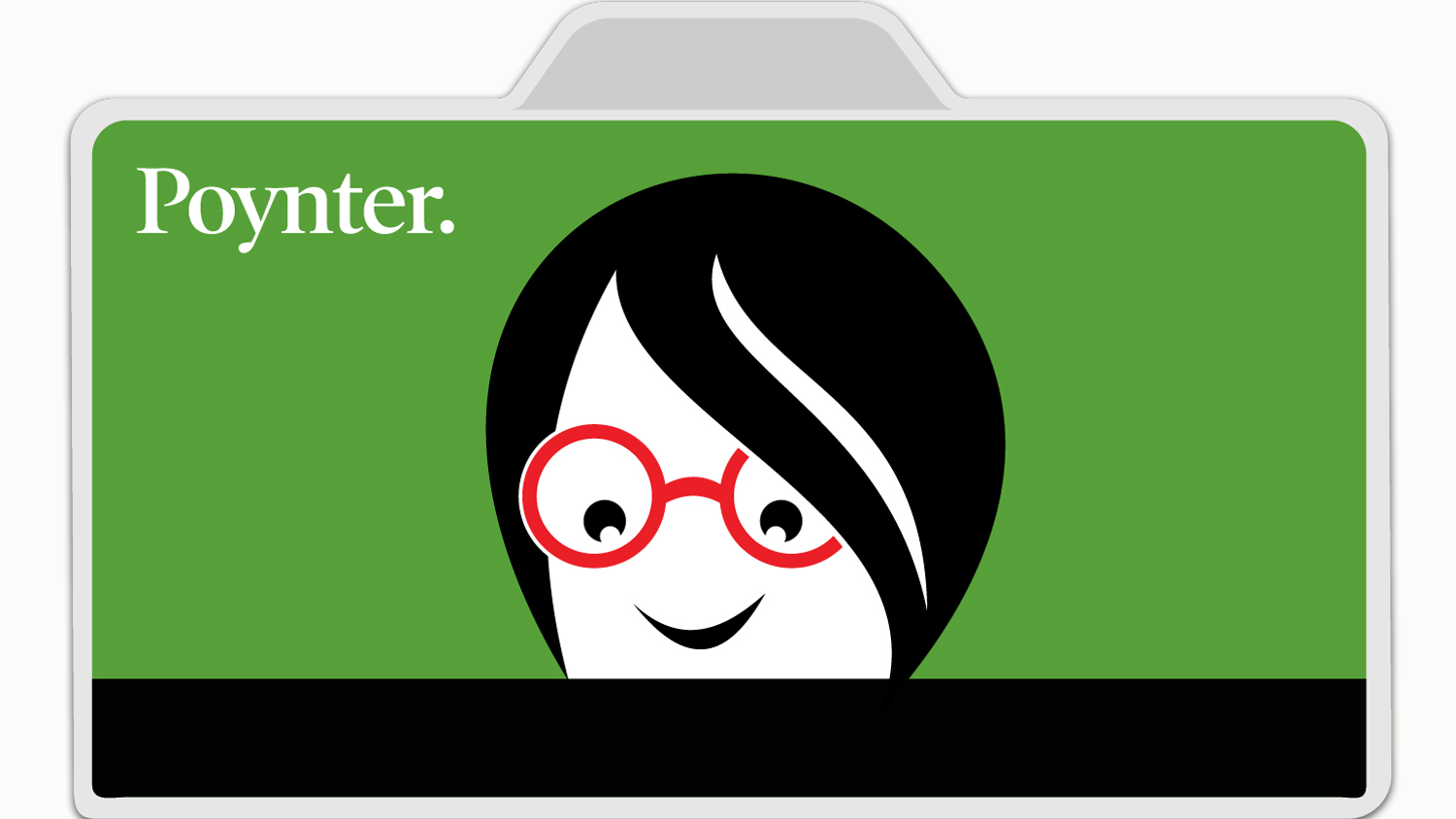Today, Poynter is unveiling a new product that I’m incredibly excited about — the Professor’s Press Pass.
This new subscription service is kind of like a little vending machine for your classroom — you pick out the bite-sized lesson you want for your class.
What we’ve put together for you is timely, cost-effective and interesting. I want to tell you a little more about it in this space because yes, I’m trying to sell it to you, but also because I truly believe it will be a great tool for you.
I remember that one of the toughest parts of teaching was finding relevant, compelling journalism topics to engage with my class. I wanted to! But often I was just too busy to regularly fish across print, online and TV to find the most riveting classroom discussion material.
When I was lucky enough to find hot topics, my students ate them up, which just made me feel guilty for not having more of them at the ready.
I remember wishing there was a wire service or app for teachers that would pick out the juiciest trends in journalism and deliver them on a silver platter to beleaguered professors.
The Professor’s Press Pass is that tool.
The service costs $12 a month or $100 a year, and your subscription goes directly back to creating more content for classrooms. A new classroom discussion topic is added each Friday, and I’ll give you a sneak peek in Alma Matters every issue.
Our lessons come with learning outcomes, expected exercise length, pre-class reading assignments, key topics, background, hyperlinks, pre-made discussion questions and even a PowerPoint for each one.
The library currently has a dozen of these case studies in it, and your subscription will give you access to all of them. (We made three of them free so you can see the kinds of lessons you’ll be getting). As the library grows, you’ll have access to it in its entirety.
Once you download a PowerPoint as a subscriber, it’s yours to keep. We simply ask that you don’t share it, as that violates our terms of use.
I hope you’ll consider a subscription this month, which will support our mission to continue to be a liaison to journalism educators and students. My goal in this new position has always been to connect Poynter’s great and vast teachings to the emerging journalists who might need them most. If you’ve ever wanted to support Poynter in some way, this is an excellent chance for you to contribute to our work while getting a great tool for your classroom in return.
Thanks for reading my sales pitch. I eagerly await your feedback. Now I’ve got to get back to combing the news to find next week’s excellent topic.
What does your paper’s name mean?
As we continue to examine the past of our institutions and their names, one student paper in Georgia came to the conclusion that The Saber was no longer appropriate.
Why?
“Looking over old newspapers from the publication’s early days revealed its Confederate origins, the staff felt that it would not be right to continue bearing that name, especially when so much of the country has been forced to reckon with its racist history,” wrote Ashley Peterson, one of the paper’s editors.
It will now be called The Uproar, “an allusion to the university’s mascot, the cougar, as well as to the publication’s goal of giving a voice to important student issues.”
This touches a nerve
Well I was bound to click on this headline from The Highlander at the University of California, Riverside: Faculty intimidation on our reporting can lead to a culture of fear and an issue of censorship of student press.
Apparently, a Highlander article published in November about a court case concerning a professor ruffled more than a few feathers, and resulted in what staffers say was an email attack on the publication. You can get a sample of the vitriol in the comments under the court case story, which appears to be a fairly straightforward and responsibly reported justice system piece.
This is the third time this week that the subject of student journalism intimidation has come up in conversation for me. I hope you remind your students that in reporting on their community, they play an integral role in helping people understand the truth. People bash the media and question journalistic integrity because they know it hurts. Doesn’t matter. Your students should keep after it.
Attempting to intimidate any journalist is wrong, but attempting to intimidate student journalists who are literally practicing what they are learning on a campus that’s supposed to be dedicated to education? That’s just gross. Don’t let the bad guys win.
It’s Duke vs. UNC … for journalists
One of college media’s greatest ideas is back: the UNC/Duke Rivalry Challenge.
These schools are tapping into student and alumni passion around a sports rivalry — for their own profit. (The NCAA has only been doing it for what, 114 years?)
This is the third year that the two papers have hosted online fundraising in competition against each other. The simple ask is for donations to the school you support. Whoever makes the most in donations wins, celebrated in a special print edition.
Rivalry Challenge III kicks off Jan. 25, and ends just before tipoff of the men’s basketball game Feb. 6 (5:59 p.m.). The special edition comes out on both campuses on Friday, Feb. 5. People who donate at least $25 will have a copy of the special edition mailed to them. Both newsrooms are independent nonprofit organizations in North Carolina, and they report that in fall 2019, there were rivalry editions from student papers at Michigan and Ohio State, Texas and Oklahoma, Florida and Georgia, and Washington and Oregon.
You should consider picking up the phone and calling whoever you hate on the gridiron or hardwood to see if they want to partner with you at the bank.
Other updates worth reading:
- My friend Vince Filak of the blog Dynamics of Writing talked to the editors at the Indiana Daily Student — a gold standard in student newsrooms — about their financial troubles.
- In her piece for Nieman Lab, Amara Aguilar writes Journalism schools emphasize listening: “It’s not just about what reporters need for a story, or what journalists think they need from our communities — it’s about what communities need and deserve from journalists.”
- It seems like there are probably some story ideas and potential assignments from the news that College Board Kills Subject Tests and SAT Essay
- This story about an eager high school journalist in New Jersey has been making the rounds.
- The E.W. Scripps Company is teaming up with the News Literacy Project this week for the second annual national public awareness campaign, National News Literacy Week, Jan. 25-29. “As guests quiz themselves on their news literacy fitness, Scripps’ and Newsy will be running stories on news literacy on-air and online across Scripps’ platforms — with tools to determine what’s credible, viewers can be empowered to debunk misinformation and help stop the spread of falsified information,” according to a release.
- If you’re interested in media literacy and empowering your students to be able to tell fact from fiction online, consider Poynter’s MediaWise fact-checking certificate.
College headlines
- ‘It’s just too much’: Why students are abandoning community colleges in droves (Hechinger Report)
- Higher Ed Under Biden: Live Updates (Chronicle of Higher Education)
- Journalism educators: These assignments can help students produce journalism with their community’s needs in mind (Journalism + Design)
Great journalism to share with your students
- A look inside Biden’s Oval Office (photos and text, Washington Post)
- The last day of Donald (text, Washington Post)
- Four Years in the Front Row: The country’s best female political reporters go on the record about what it was really like covering Trump’s America. (multimedia, Elle)
One last thing
A couple of years ago when I was the managing editor of Poynter, I got a fascinating freelance pitch for a story about newspapers apologizing for their racist pasts. It felt timely and interesting — you decide if I was right.
Some of you may have seen the recent Kansas City Star mea culpa on its own racist past and founder. Fascinatingly, they combed through their archives and those of Black newspapers’ in the area to compare event coverage.
I have previously encouraged student publications to examine their own past. Several of the schools in the Poynter College Media Project are examining racial tensions at their campuses, and in more than one case, what their own university publications did to ease or inflame them.
Don’t put the cart before the horse — see what you find before you make a plan — but it might not be a bad idea to consider a public or posted policy that addresses your commitment to diversity, or consider a series examining the journalistic errors of those who came before you.
If you have access to a stash of college yearbooks, either in your own office or in your campus library, assign a staffer to read through them. Look for egregious examples of racism like blackface and segregation, but also keep an eye out for ways you can demonstrate context to your audiences. What was the feel on campus about race relations in the ’20s and ’30s? The ’60s? The ’90s? Examine ads, editorials, stories and photos. Come up with a plan for documenting and marking what you find so you don’t lose track of it in hundreds of pages of back copy. Don’t be afraid to ask long-time campus community members to add context or explain things you don’t understand. Librarians especially can provide assistance.
If you publish, be transparent about what you did and why. Here’s hoping you find a history of racial harmony … as unlikely as that seems.







